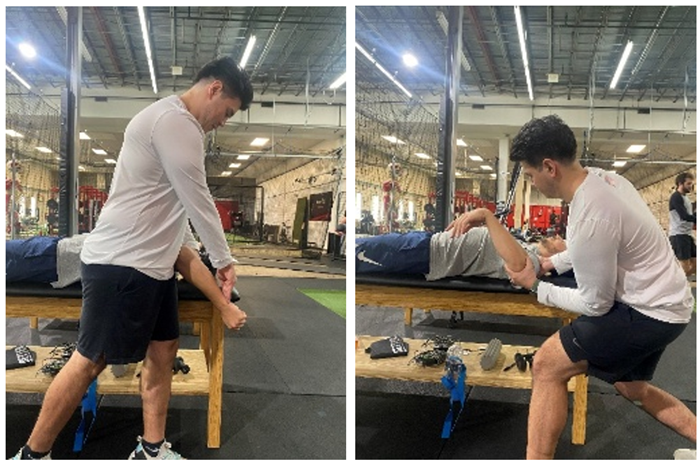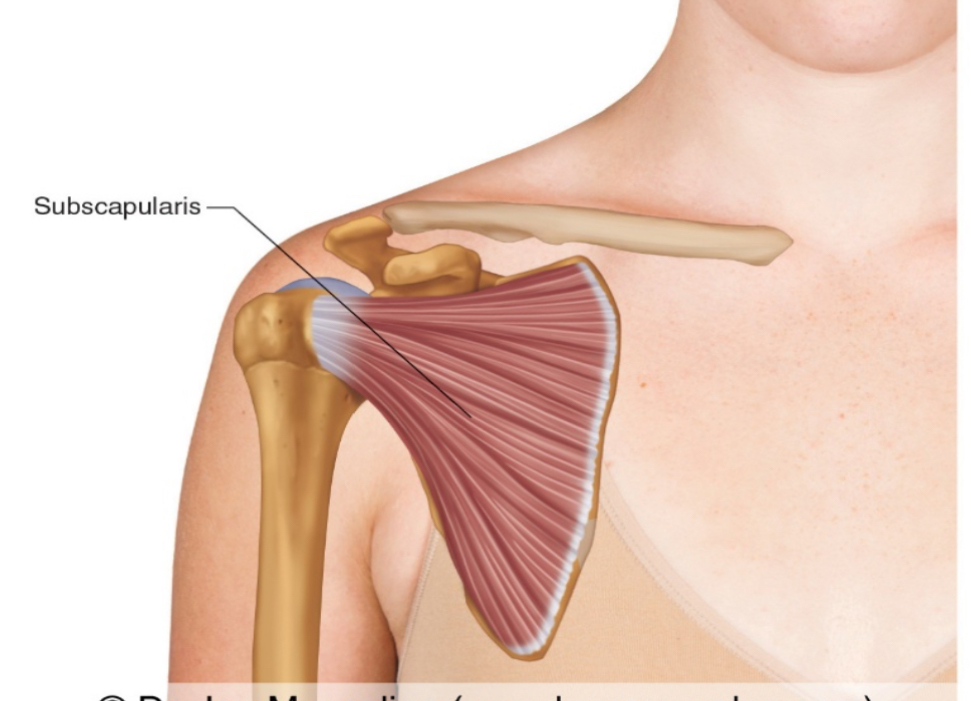
Being efficient and staying healthy as a pitcher is highly reliant on both internal (IR) and external (ER) ranges of motion at the shoulder. In this article, we are going to focus on the IR side of things.
-
- What exactly is shoulder IR
- Why is it important to baseball players
- What are some of the more common causes of poor IR
- How to assess passive vs. active ranges of IR
- When to train shoulder IR
What exactly is shoulder IR?
This is the movement of rotating your upper arm towards the front of your torso. It’s performed by the 4 rotator cuff muscles, but primarily the teres minor, and subscapularis.
When the external rotators contract to rotate the shoulder outwards, the opposing muscle group (internal rotators) are simultaneously being stretched and are ready to contract more forcefully to produce internal rotation. In other words, external rotation is just as much of a player in this process as internal rotation when trying to safely get more shoulder IR. The more you can externally rotate your shoulder, the greater potential you have for internal rotation due to the elastic recoil of the stretched internal rotator muscles.
Injury implications – However, more is not always better. Imbalances in shoulder rotation, where external rotation is significantly greater than internal rotation, can lead to an increased risk of shoulder injuries, particularly in overhead athletes.
Why is it important to baseball players?
The shoulder internally rotates at over 7,000°/s during acceleration; that’s the fastest motion in all of sports. There’s no way that the rotator cuff muscles alone with their small cross-sectional area can decelerate it. This can lead to losses in internal rotation due to the external rotators not putting on the brakes and allowing the arm to “slam shut” at release.
What are some of the more common causes of poor IR?
There are a few…
Eccentric stress of throwing – One common cause is repetitive overhead or cross-body motions. The stress of throwing can lead to a loss of range of motion on the elbow flexors and glenohumeral external rotators
Soft tissue restrictions – Restrictions in the pectoralis major, latissimus dorsi, and Rhomboids can limit both shoulder internal and external rotation range of motion. Remember, both are equally important when talking about good IR! What to do – Enter TRX deep squat breathing to not only decrease lat and rhomboid tone but help get the ribs down for our athletes with a wide infrasternal angle ISA (click here for more on this topic).
TRX Deep Squat Breathing
Poor Motor Control – This is the ability of the nervous system to regulate and coordinate movements, including posture and muscle activation, to produce purposeful and coordinated actions in response to sensory information from the body and environment. Essentially, it’s how the brain and nervous system control movement throughout the body and that is what we will spend most of this article talking about.
Poor Motor Control is more common in younger athletes who participate in overhead sports. Our job is to enhance not just the strength of the shoulder, but also its proprioception (motor control). We really want to focus more on motor control of the muscles closer to the cuff when training Internal and external rotation.
Let’s take the subscapularis (Subscap) for example which is a great place to start due to the fact that it helps control IR of the joint. The Subscap attaches right on the anterior portion of the humeral head and is the largest and strongest muscle in the rotator cuff, and its main function is to internally rotate the shoulder.

Whether it be extension, abduction, or internal rotation, the Subscap has to work overtime to keep up with the bigger lat and pec muscles to name a few.
How to assess passive vs. active ranges of motion?
We never want to see an athlete with a lot of “passive ROM that they can’t control “actively”. Thus, we will test both passive and active internal ROM and assess the difference.
Assessment – Supine IR (Passive)
Assessment – Prone IR (Active)
An acceptable difference between passive and active internal rotation is typically around 10-20 degrees; meaning that the passive range of motion (where the joint is moved by a trainer or PT) should be noticeably greater than the active range of motion (where the athlete moves the joint on their own) by about 10-20 degrees.
Even though it is rare, if the active ROM is larger than the Passive could indicate muscle weakness, pain, or tissue tightness that is limiting the active movement. This would be an instance where strengthening IR in the weight room would be warranted. For this, cable IR is a staple at our facility.
1/2 Kneeling Cable IR
However, if the difference is greater than 20 degrees, this is where directly prescribing some good motor control training in IR and ER can be really effective.
-
- Prone IR Holds helps drive internal rotation and strengthening the Subscap.
Prone IR Holds
-
- End Range Lift-offs works on building up motor control as the arm lays back.
End Range Lift-offs
When to train shoulder IR?
My quick response is whenever needed. But, as I mentioned before, most losses in IR are due to the eccentric stress of throwing, and generally presents itself at the beginning of the off-season after a long season on the mound.
See ya’ in the gym…
By Nunzio Signore (BA, CSCS, CPT, NASM, FMS)
If you’d like to be placed on our email list please enter your email address below!
